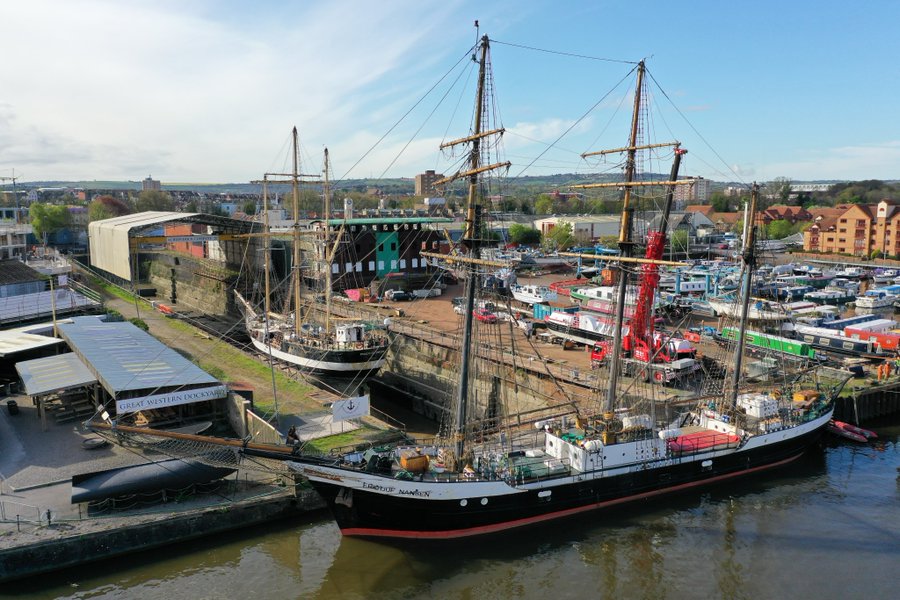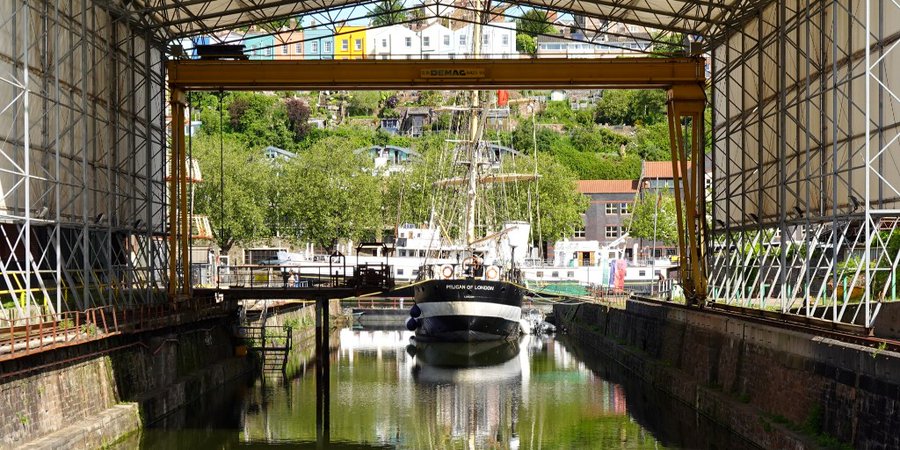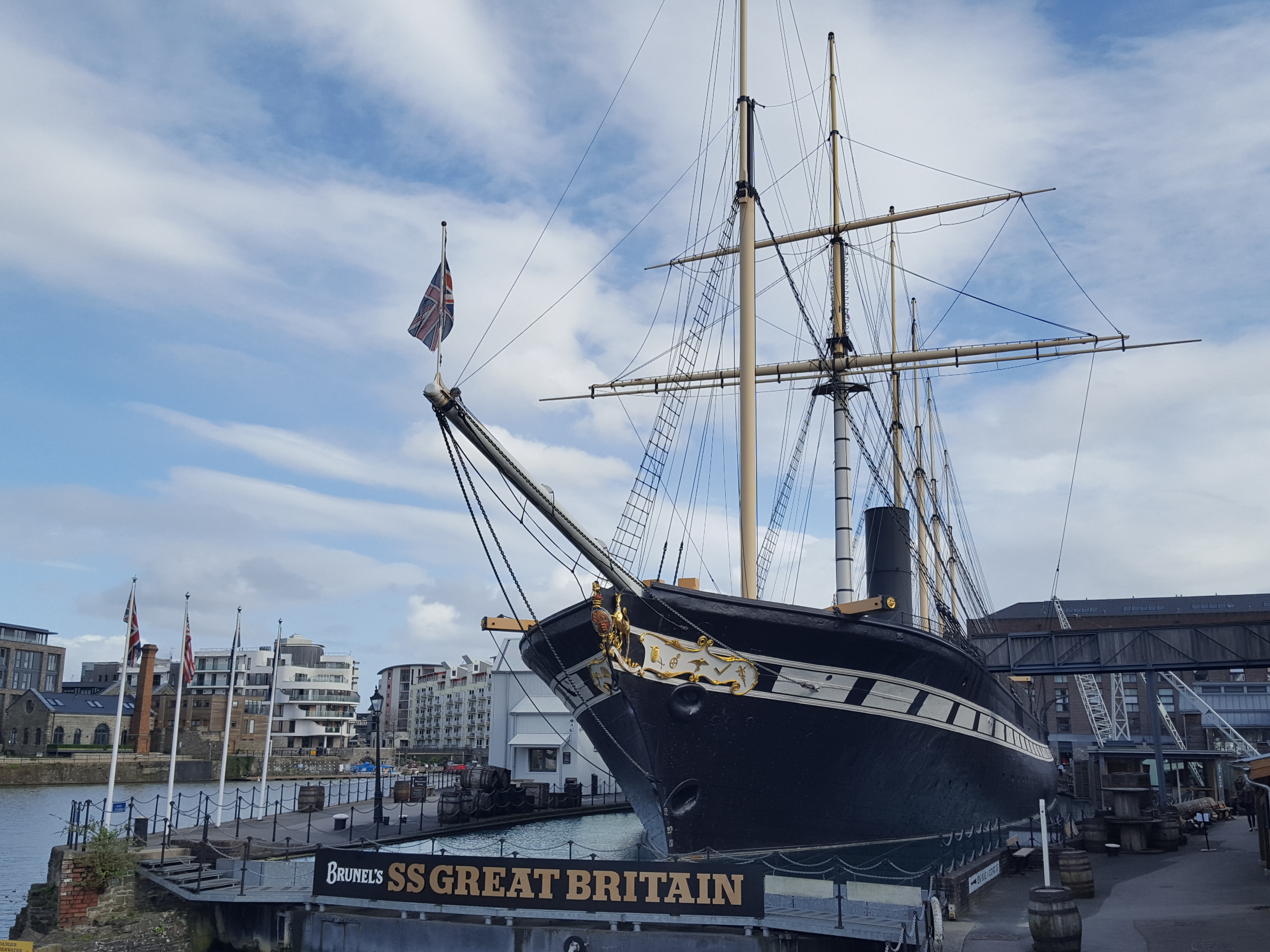
Industrial history
James Martin Hilhouse started shipbuilding on a site close to Hotwells Road in Bristol in 1770. The creation of the Floating Harbour saw the firm move their yard to the south bank where they established their 'New Dockyard', complete with dry dock. Originally dug in 1820, the 540ft-long dock was the largest in Bristol.
In 1824 the firm was re-titled 'George Hilhouse & Company' and, after a spell trading as 'Hilhouse, Hill & Company', Charless Hill took control of the company, brought his 16-year-old son (also called Charles) into the business and renamed it Charles Hill & Son in 1845.
Three years later the New Dockyard was re-titled the Albion Yard.
Then, in 1970, an announcement was made that commercial operations in Bristol City Docks were to cease and Charless Hill launched their last ship, the Miranda Guinness, on 9 July 1976. The Albion Yard closed on 4 January 1977, the year when Bristol City Docks were closed to commercial traffic.
Abels Shipbuilders continued to build small ships in the dock from 1980 onwards while the Bristol Marina was created across the rest of the Charles Hill yard. The Albion Dock became a Grade II listed building in December 1994.
Albion Dockyard today

Since 2018 the Albion Dock Company has restored the dry dock, in partnership with the SS Great Britain Trust, repairing the facilities and providing an essential service to ship-owners. Ship repair and shipbuilding restarted that same year through a partnership between the SS Great Britain Trust and Bristol City Council.
In 2022, SS Great Britain Trust received funding for the 'Albion Dockyard Project', which is set to transform the Albion Dockyard into a world-class maritime attraction inside a thriving working shipyard. The dock itself will be conserved, maintaining a working dry dock and reinstating the original clock tower, and its centrepiece will be the recreation of a full-size version of Isambard Kingdom Brunel’s first ship, the paddle steamer Great Western, which had been built in Bristol as the world’s first transatlantic ocean liner. The new addition will not only create a striking visual presence evoking the city’s role in pioneering global ocean travel, but will share stories of migration, with inclusion and access a priority, connecting historic stories with contemporary experiences.
About the SS Great Britain Trust

Brunel's SS Great Britain tells the incredible story of one of Britain's greatest engineers and one of the most important ships in maritime history.
The Trust's vision is to protect the legacy of Brunel and the SS Great Britain and inspire engineers and entrepreneurs of the future.
In 1970, the SS Great Britain Project brought the rusting shell of the SS Great Britain home from the Falkland Islands, braving 8,000 miles of stormy sea, in an attempt to save it from ruin and keep its story alive. That 'project' became the SS Great Britain Trust, and today they continue to care for the ship and Brunel collections for the good of everybody, for all time.
Brunel's SS Great Britain is now Bristol's number one visitor attraction, with two museums and the lovingly restored Victorian ship, a historic dockyard, leading research centre, wedding venue and a purpose built conference facility.

Latest News
June 2025 Trust Secures £1 Million for Groundbreaking Project Read more
Find out more:
Follow them on social media:




